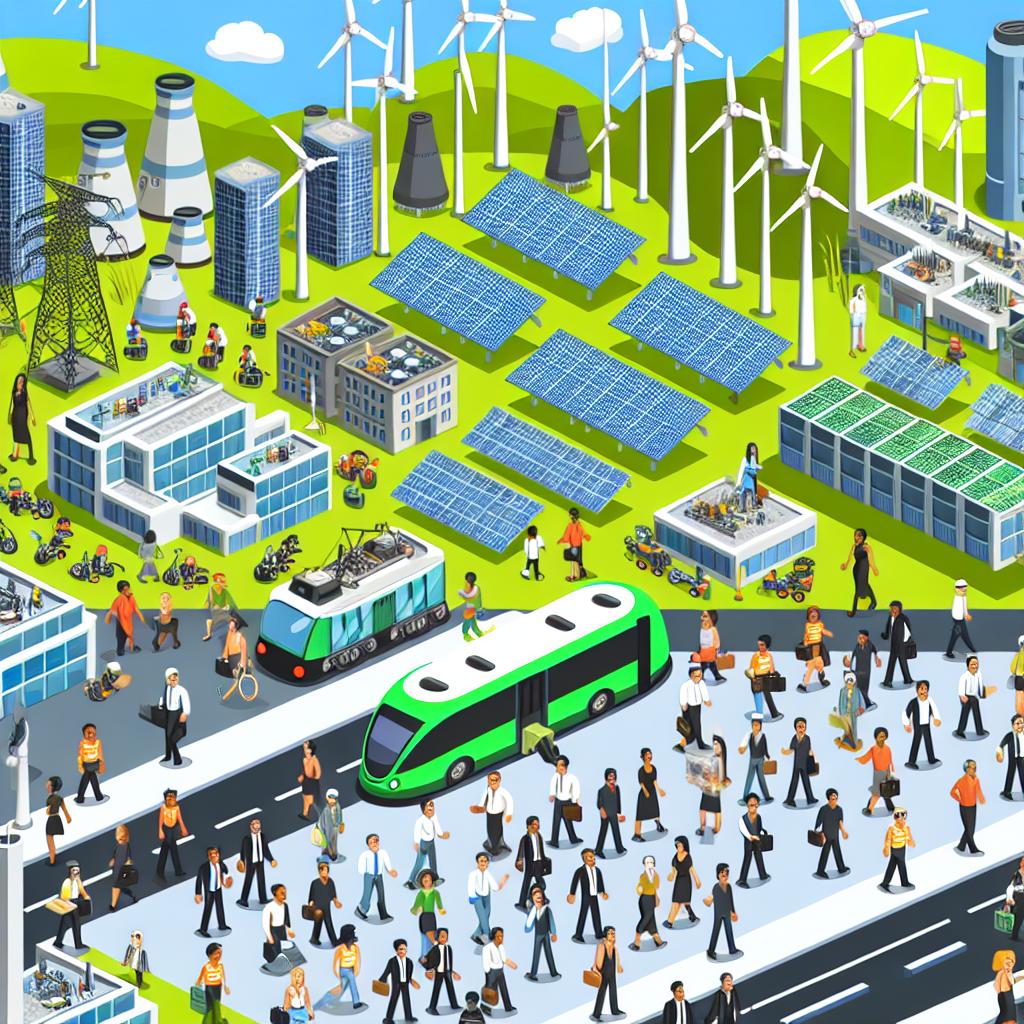
Introduction
The global shift towards green energy has been recognized not only as a critical measure to mitigate environmental concerns but also as an influential force in job creation and economic expansion. In light of increasing awareness of climate change, multiple nations are channeling substantial investments into renewable energy avenues like solar, wind, and hydroelectric power. This pivot from traditional fossil fuels to more sustainable options is not only birthing new industries but is also revitalizing established sectors, thereby delivering significant economic advantages.
Job Creation in the Green Energy Sector
One of the most prominent impacts of the renewable energy sector is its rapid development as a job market. As reported by the International Renewable Energy Agency (IRENA), the number of individuals employed in renewable energy reached over 11 million globally by 2020, with prospects for continued growth as investment in this domain escalates. The job opportunities provided by green energy are spread across various industries and occupations, offering a broad spectrum for employment.
Solar Power: Within the solar industry, there has been a notable surge in growth. This sector offers a range of employment opportunities extending from research and development to the intricacies of installing and maintaining solar panels. The emergence of companies specializing in photovoltaic technologies has paved the way for new roles and career trajectories in this field.
Wind Energy: Wind energy is another area that significantly contributes to job creation, with wind farms offering roles in manufacturing, installation, and maintenance. With ongoing technological advancements, there is an expanding demand for expertise in engineering and research, which in turn fuels further innovations in wind power.
Energy Efficiency: The pursuit of energy efficiency extends beyond mere energy production. It encompasses improving the energy usage in residential and commercial settings, thereby creating jobs in retrofitting, energy auditing, and construction. These roles play a vital role not only in diminishing energy consumption but also in delivering cost savings to consumers.
Economic Growth Fostered by Green Energy
The transition to green energy underpins substantial economic growth. Investments in this sector amplify demand for cutting-edge technologies and services. Moreover, renewable energy initiatives typically come with lower operational costs over time, making them intriguing investments that contribute to broader economic stability.
Innovation and Technology: The pursuit of renewable energy catalyzes innovation. As businesses endeavor to elevate the efficiency and effectiveness of renewable energy systems, research and development turn into pivotal areas of economic engagement. The outcomes of such efforts often lead to technological breakthroughs, offering applications that extend beyond energy generation.
Supply Chains: The implementation of green energy solutions necessitates the introduction of new materials and components, encouraging the development of comprehensive supply chains that traverse multiple industries. This includes essential materials such as rare earth elements for wind turbines and silicon for solar panels, providing economic involvement opportunities across various facets of the supply chain.
Local Economic Impact: The rollout of renewable energy projects frequently mandates collaboration with local communities, resulting in enhanced employment opportunities and promoting sustainable community advancement and economic resilience.
Challenges and Considerations
Despite the significant benefits attributed to green energy, several challenges accompany its implementation. The transition demands considerable investment, regulatory backing, and infrastructural advancements. Policymakers are tasked with finding effective means to assist workers displaced from traditional energy sectors, ensuring a fair transition. Moreover, the intermittent nature of several renewable energy sources highlights the need for progress in energy storage technologies and grid management systems.
Conclusion
The green energy sector serves as a vibrant catalyst for job creation and economic growth. As nations endeavor to attain sustainability targets and curtail carbon emissions, investing in renewable energy stands out as a feasible and strategic pathway toward economic resilience. To gain deeper insights into specific green energy initiatives, further exploration into individual projects and government policies is available through dedicated resources on the topic.